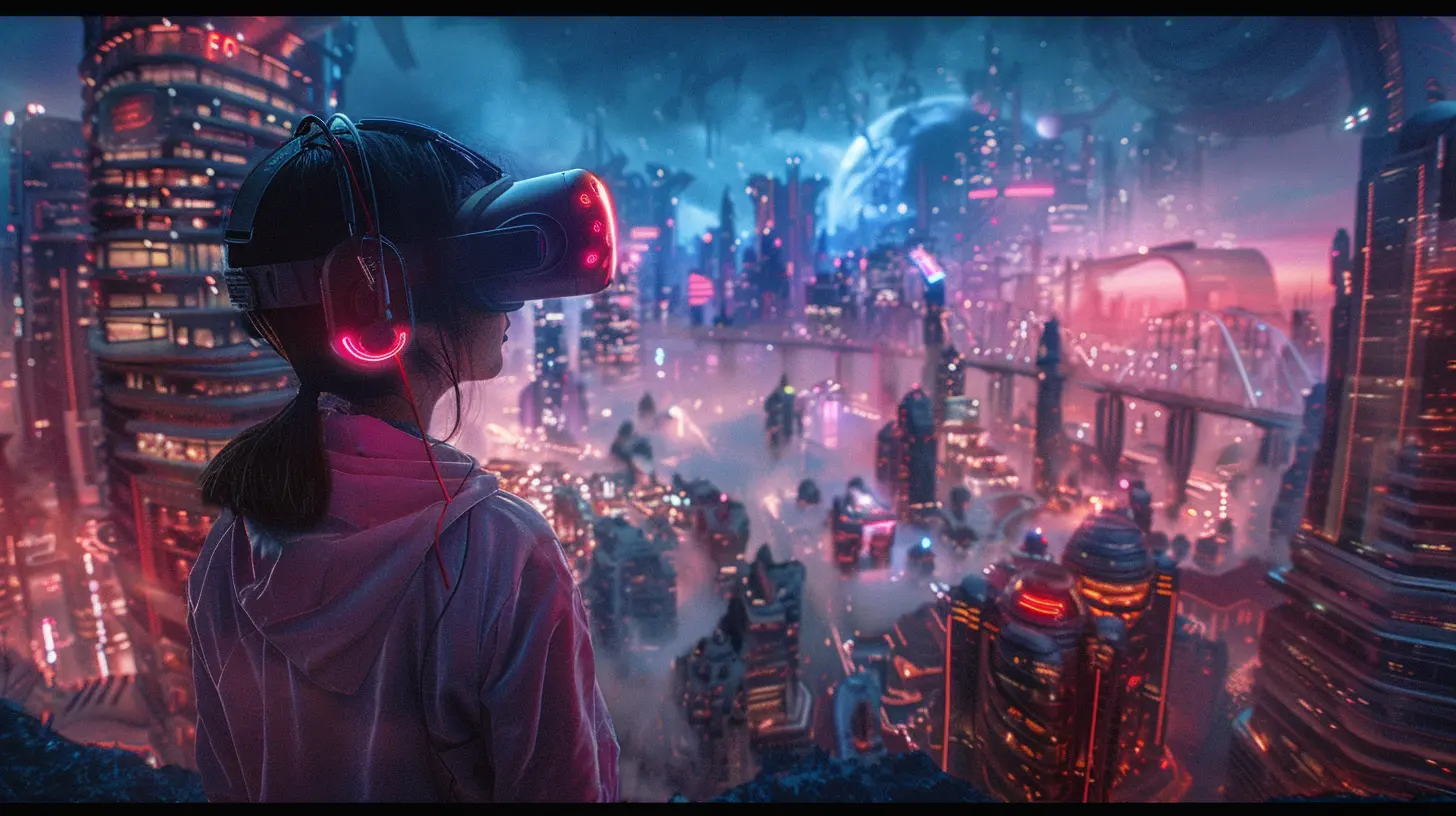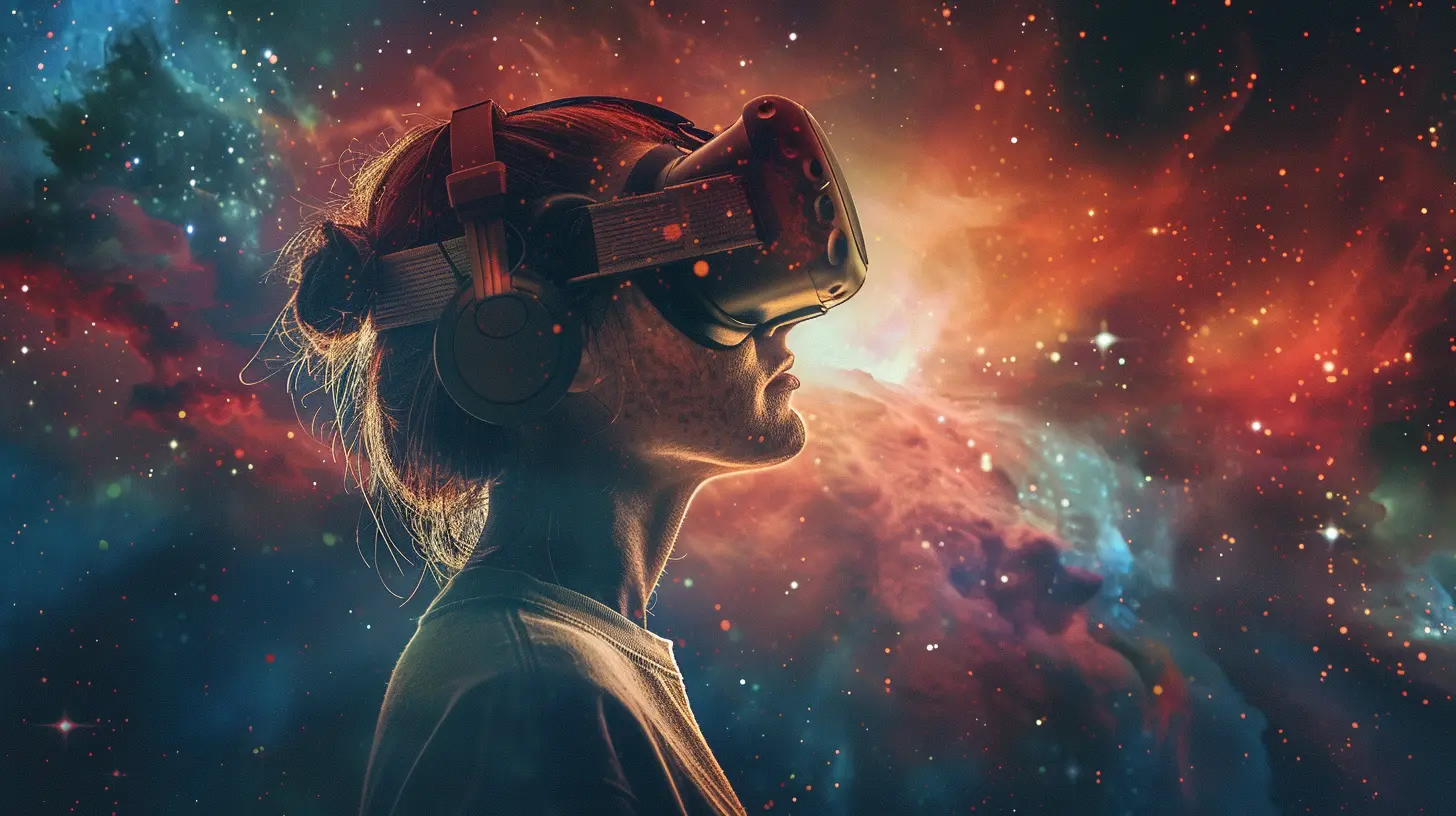From Sci-Fi to Reality: The Evolution of VR Storytelling
23 November 2025
Virtual Reality (VR) was once the stuff of science fiction—something you'd see in futuristic movies or read about in novels. But today? It's a game-changer, revolutionizing the way we experience stories. From interactive VR films to immersive gaming adventures, this tech is reshaping storytelling in ways we never imagined.
But how did we get here? And where is VR storytelling headed next? Buckle up because we're about to take a journey through the fascinating evolution of VR storytelling.
The Early Dreams of VR in Sci-Fi
Long before VR became a tangible reality, the idea of stepping into a fully digital world captivated the imaginations of storytellers. Science fiction introduced us to concepts that, at the time, seemed impossible.Remember The Matrix? Or Tron? These films envisioned entire digital worlds where people could live, interact, and experience stories firsthand. Even earlier, classic literature like Neuromancer by William Gibson painted visions of cyberspace where human perception was completely altered.
These ideas weren't just entertainment—they were blueprints for the future.
The First Steps: VR's Humble Beginnings
Although sci-fi dreamed big, real-world VR technology had a slow start. The first real VR experiences came in the 1960s with the "Sword of Damocles" headset—an unwieldy, ceiling-mounted device that could display rudimentary 3D graphics. It wasn’t exactly ready for prime time, but it laid the foundation.Fast forward to the 1980s and 90s, and VR arcades started popping up, offering clunky (but thrilling) immersive gaming experiences. However, high costs and limited technology kept VR from becoming mainstream.
The Modern Breakthrough: VR for Everyone
Everything changed in the 2010s when companies like Oculus, HTC, and Sony pushed VR technology to new heights. The Oculus Rift, HTC Vive, and PlayStation VR made immersive experiences more accessible than ever.But hardware alone wasn’t enough. For VR to truly shine, it needed compelling storytelling. That’s when filmmakers, game developers, and writers started experimenting with how VR could revolutionize narratives.
How VR Changed Storytelling Forever
Traditional storytelling has always been a one-way street. You watch a movie, read a book, or play a game following a linear structure. VR flips the script—it invites you into the world, making you an active participant.1. Immersive Experiences vs. Passive Viewing
In VR, you don’t just watch a story unfold—you live it. Imagine standing in the middle of a battlefield, witnessing events from the perspective of a soldier. Or exploring a haunted house where every creaking door and shadowy figure makes your heart race.Unlike traditional media, VR storytelling requires the audience to engage with the environment. You're no longer just a spectator—you’re inside the story.
2. Interactive Storytelling with Player Choice
VR brings an element of choice that traditional media lacks. In movies and books, the story follows a predetermined path. But in VR, what you do can change the outcome.Games like Half-Life: Alyx and Lone Echo demonstrate this beautifully. Not only are you immersed in a rich world, but your decisions directly impact what happens next.
It’s storytelling with agency—and it’s addictive.
3. Empathy Through First-Person Perspective
One of VR's most powerful storytelling tools is its ability to create empathy. By placing viewers directly in someone else's shoes, VR can make experiences deeply personal.Take Clouds Over Sidra, a VR documentary following the life of a Syrian refugee. Instead of watching from a distance, you’re right there in the refugee camp, seeing the world through Sidra's eyes. It’s a level of emotional engagement that traditional media struggles to create.
The Challenges of VR Storytelling
Of course, VR storytelling isn't without its hurdles. Crafting an engaging narrative in VR is vastly different from writing a screenplay or a book.1. Motion Sickness and Comfort
Not everyone can handle prolonged VR experiences. Motion sickness is a real issue, and creators must design stories that are comfortable and engaging without overwhelming the audience.2. Balancing Freedom with Narrative Cohesion
Giving users too much freedom can make a story feel aimless. Finding the sweet spot between player agency and structured storytelling remains a challenge.3. High Production Costs
Creating high-quality interactive VR stories requires significant resources. From 3D modeling to motion capture, the costs can be prohibitively high compared to traditional storytelling methods.The Future of VR Storytelling: What’s Next?
With advancements in technology, VR storytelling is set to become more immersive and interactive than ever before.1. AI-Driven Narratives
Imagine VR stories that adapt in real time based on your actions. AI-driven storytelling could create personalized experiences where no two journeys are the same. It’s like having a story that bends and shifts around your decisions—true dynamic storytelling.2. Haptic Feedback for Full Immersion
VR gloves, bodysuits, and haptic vests are already being developed to add a sense of touch to virtual experiences. Soon, you won’t just see a VR world—you’ll feel it.3. Social VR and Shared Storytelling
Platforms like Meta's Horizon Worlds and VRChat are already pushing the boundaries of social VR. In the future, we could see entirely new ways of telling stories that involve multiple people experiencing a narrative together in real time.Conclusion: The New Era of Storytelling
From sci-fi dreams to a fully immersive reality, VR storytelling has come a long way. What was once mere fantasy in movies like The Matrix is now something you can experience in your living room.As technology continues to evolve, VR storytelling will keep pushing boundaries. We’re at the dawn of something incredible—an era where stories aren’t just told but lived.
So, are you ready to step into the future of storytelling?
all images in this post were generated using AI tools
Category:
Virtual RealityAuthor:

Michael Robinson
Discussion
rate this article
1 comments
Mira McClure
VR storytelling has come a long way! Remember when we thought wearing a cardboard box on our heads was the pinnacle of tech? Now, we’re practically stepping into alternate dimensions—just please don’t forget to take off the headset for snacks!
November 23, 2025 at 4:22 AM


